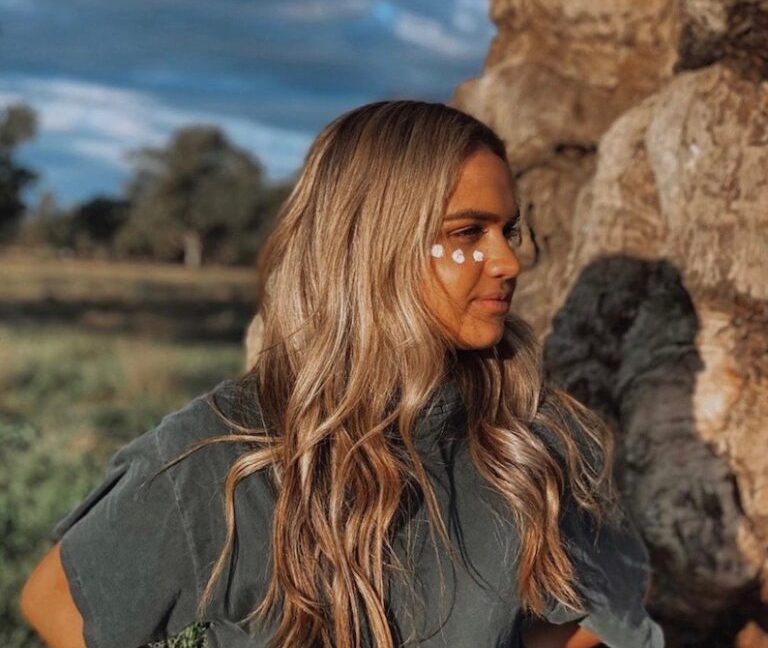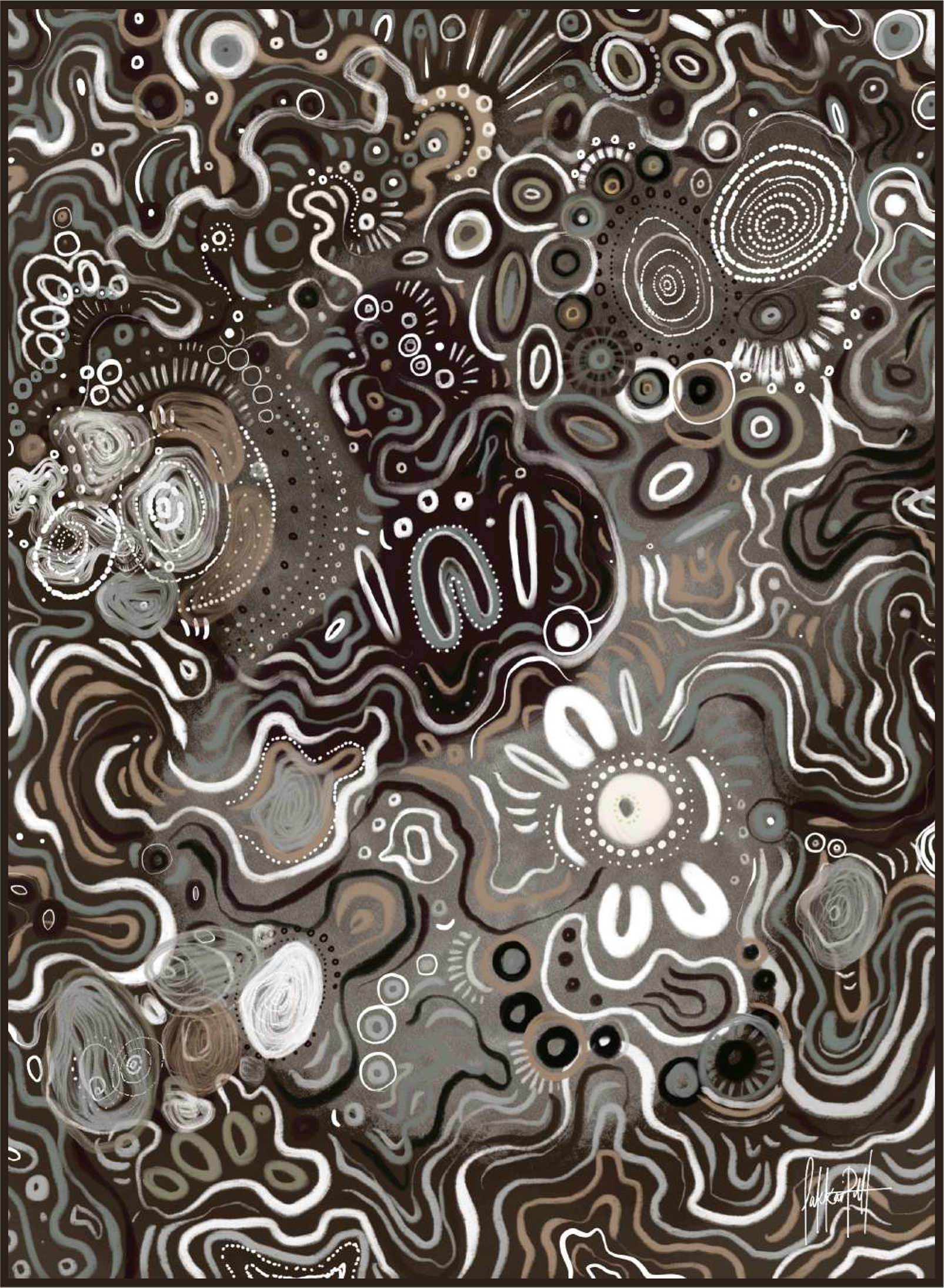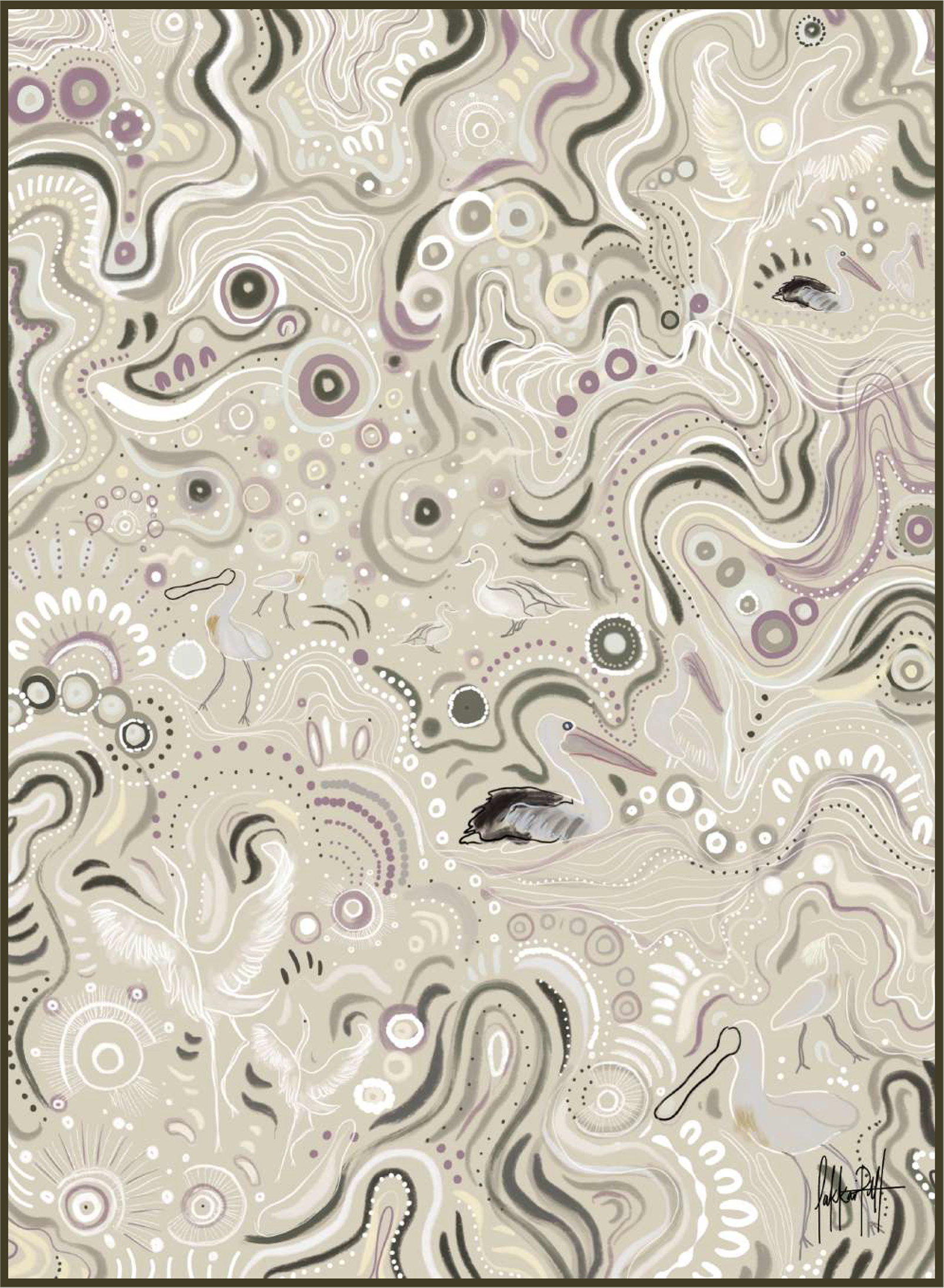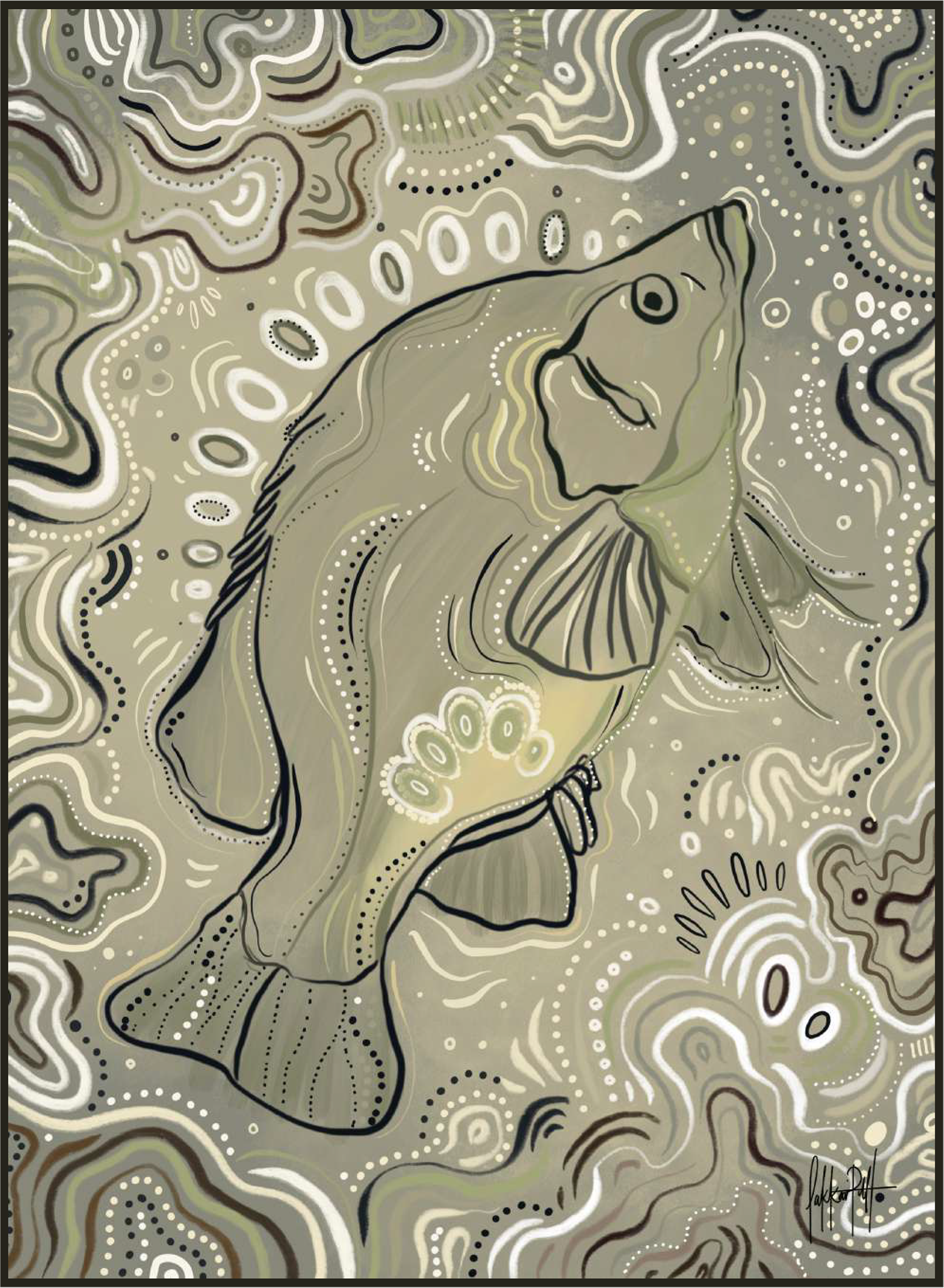Using art to explore the cultural significance
of our ecological indicators
Written by: Shjarn Winkle
The Flow-MER Program’s Gwdir Selected Area team use a range of ecological indicators to assess the health of the Gwydir Wetlands. To help explain our science, we engaged Lakkari Pitt, a proud Gamilaroi Yuwaalaraay woman from Walgett, New South Wales, to develop cultural interpretations of these indicators.
Lakkari’s art is a contemporary take on the knowledge that her Elders, and significant people in her life, have passed down throughout generations. These beautiful artworks explore the movement, essence and stories of Country.
As you look at each of the artworks below, listen to Lakkari talk about how these beautiful images express the six ecological indicators we monitor through the Flow-MER Program. These images will be used to share our research findings, and we hope that Lakkari’s paintings will enable us to reach a broader audience through the emotions they engender, and the connection they provide to the places we care about.
Please note: Copyright of the below artworks belongs to Lakkari Pitt.

Lakkari Pitt
www.lakkaripitt.com

This piece symbolises the movement of gali (meaning water in Gamilaroi language). The Gwydir Wetlands are an abundant source of gali, providing nutrients to Gunimaa (meaning Mother Earth in Gamilaroi language) and attracting seasonal food and vegetation for our people. Tones of brown and black are used throughout the artwork to capture the beauty and essence of gali.

Throughout this artwork are some of the different birds found at the Gwydir wetlands. The birds represented include pelicans, brolgas, ducks, and spoonbills. Birds are indicators of seasons and essential food, and play a significant role in maintaining the environment. Birds are extremely spiritual to our people and are often mimicked in dance. Their feathers are used in ceremony and celebration, and are also resourcefully utilised to provide warmth.

Frogs are not only a significant aspect of our ecosystem, but are also extremely spiritual to our people. Frogs are mimicked in dance and ceremony. The water represented within the artwork symbolises the frog singing our songs into gali (meaning water in Gamilaroi language) and passing its knowledge onto Country.

This artwork symbolises the different types of vegetation found around the Gwydir, including various grasses, bulrushes, marsh clubrush, lignum bush and phragmites. These plants and grasses are extremely important to our people and are used for food, weaving and various other resources.

This artwork pictures a yellow belly fish, a staple part of our peoples’ diet. Our people not only looked for fish to eat, but also carefully ensured that they are reproducing and thriving.

This piece symbolises the Gwydir’s ecosystem. Pictured throughout the piece is plankton, tadpoles, krill, various bugs and vegetation, frogs, snakes, fish, dragonflies and an array of birds. The yiraay (meaning sun in Gamilaroi language) is pictured in the artwork. Yiraay is our source of energy and provides the nutrients which are essential to maintain our systems growth and life.
Share this page:

The Gwydir is a special place with significant environmental, cultural and economic values. Our work here focuses on monitoring and evaluating the outcomes water for the environment enables in some of the largest waterbird breeding colonies in Australia. We also work in the rivers and floodplains to assess water quality, fish breeding and Food webs.

The information on this website is presented by the Department of Climate Change, Energy, the Environment and Water (the Department) for the purposes of disseminating information to the public. It does not constitute legal or other professional advice.
The views and opinions expressed on this website are those of the authors and do not necessarily reflect those of the Australian Government or the Portfolio Ministers for the Department or indicate a commitment to a particular course of action.
While reasonable efforts have been made to ensure that the contents of this website are factually correct, the Commonwealth of Australia does not accept responsibility for the accuracy or completeness of its contents. The Department disclaims liability, to the extent permitted by law, for any liabilities, losses, damages and costs arising from any reliance on the contents of this website. You should seek legal or other professional advice in relation to your specific circumstances.
Use of this website is at a user’s own risk and the Department accepts no responsibility for any interference, loss, damage or disruption to your computer system which arises in connection with your use of this website or any linked website.